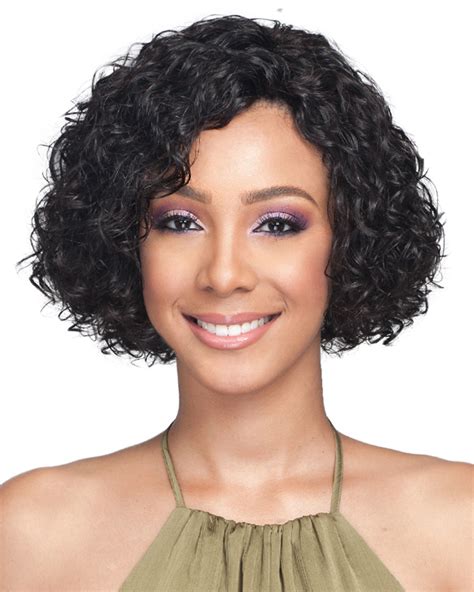Low density wigs have emerged as a game-changer in the hair industry, capturing the hearts of countless individuals seeking a natural and effortless hair transformation. Unlike traditional wigs, which often lack breathability and can appear artificial, low density wigs offer unparalleled comfort and a remarkably realistic look.

Why Low Density Wigs?
Hair loss, thinning hair, and scalp conditions can impact self-esteem and confidence. Low density wigs provide an empowering solution to these challenges, offering a discreet way to restore hair volume and enhance one’s appearance.
- Natural Look: Low density wigs are crafted from high-quality materials, such as human hair or synthetic fibers, and feature a low hair density of 100-150%, which mimics the natural thickness of human hair. This ensures a seamlessly blended look that appears organic and undetectable.
- Comfort and Breathability: Unlike high-density wigs, low density wigs allow ample airflow to the scalp, preventing overheating and irritation. The lightweight construction minimizes pressure on the head, making them comfortable to wear even for extended periods.
- Customization Options: Low density wigs offer versatile styling options, enabling you to tailor them to your personal preferences. They can be cut, colored, and styled just like natural hair, allowing you to achieve your desired look.
Understanding Low Density Wigs
Hair Types and Materials:
- Human hair wigs offer the most realistic look and feel, but require more maintenance and care.
- Synthetic fiber wigs are more affordable and durable, but may have a slightly less natural appearance.
Cap Constructions:
- Lace front wigs: Create a natural-looking hairline by using a sheer lace that blends with the skin tone.
- Monofilament wigs: Provide a lightweight and breathable base that allows for natural scalp movement.
- Weft wigs: Offer a cost-effective option with a traditional mesh cap construction.
Density Levels:
- Low density wigs typically range from 100-150% hair density.
- 100% density offers minimal hair coverage, suitable for those with significant hair loss or thinning.
- 150% density provides moderate hair coverage, ideal for restoring volume and fullness.
Selecting the Right Low Density Wig
Consider Your Hair Needs: Determine the level of hair loss or thinning you are experiencing and choose a density level that will provide sufficient coverage.
Match Your Hair Texture: Choose a wig with a hair texture that closely resembles your natural hair. This will ensure a seamless blend and a natural-looking appearance.
Consider Your Lifestyle: If you maintain an active lifestyle, opt for a short or medium-length wig that is easy to manage. If you prefer longer styles, consider a lace front wig for a more secure fit.
Pain Points and Motivations
Pain Points:
- Low self-esteem: Hair loss can significantly impact emotional well-being and lead to feelings of self-consciousness.
-
Limited hair styling options: Traditional wigs can restrict styling possibilities due to their bulkiness and unnatural appearance.
Motivations: -
Enhanced confidence: Low density wigs can restore volume and fullness to hair, boosting self-esteem and confidence.
- Natural hair transformation: They offer an undetectable way to achieve the desired hair look, without the constraints of hair loss or thinning.
- Versatile styling: Low density wigs allow for customizable hair styling, empowering individuals to express their individuality.
Step-by-Step Guide to Wearing a Low Density Wig
- Prepare Your Scalp: Wash your hair or use a wig cap to create a smooth base for the wig.
- Apply Adhesive: If using a lace front wig, apply a thin layer of wig adhesive to the hairline for a secure fit.
- Place the Wig: Gently place the wig onto your head, aligning it with your natural hairline.
- Adjust and Style: Use a wig brush or comb to style the wig and adjust it for a comfortable and natural fit.
Pros and Cons of Low Density Wigs
Pros:
- Natural-looking appearance
- Lightweight and comfortable
- Versatile styling options
- Confidence-boosting
Cons:
- Require more frequent care and maintenance
- Can be more expensive than traditional wigs
- May not provide sufficient coverage for individuals with severe hair loss
Innovative Applications of Low Density Wigs
Female Empowerment: Low density wigs empower women to break free from hair loss or thinning-related stereotypes and embrace their beauty.
Cosplay and Entertainment: These wigs enable actors and cosplayers to transform into iconic characters with remarkable authenticity.
Fashion and Aesthetics: Low density wigs offer endless possibilities for creating unique and stylish hair looks, enhancing personal style.
Tables
Table 1: Hair Density Levels for Low Density Wigs
| Density Level | Percentage | Coverage |
|---|---|---|
| 100% | 100% | Minimal |
| 120% | 120% | Moderate |
| 150% | 150% | Maximum |
Table 2: Cap Constructions for Low Density Wigs
| Cap Construction | Features |
|---|---|
| Lace Front | Natural-looking hairline, breathable |
| Monofilament | Lightweight, scalp movement |
| Weft | Traditional cap, cost-effective |
Table 3: Hair Types for Low Density Wigs
| Hair Type | Appearance | Maintenance |
|---|---|---|
| Human Hair | Most realistic look and feel | Requires regular care and styling |
| Synthetic Fiber | Affordable, durable | Less natural appearance |
Table 4: Pain Points and Motivations for Low Density Wigs
| Pain Point | Motivation |
|---|---|
| Low self-esteem | Enhanced confidence |
| Limited hair styling options | Natural hair transformation |
| Inconvenience of hair loss | Versatile styling |
